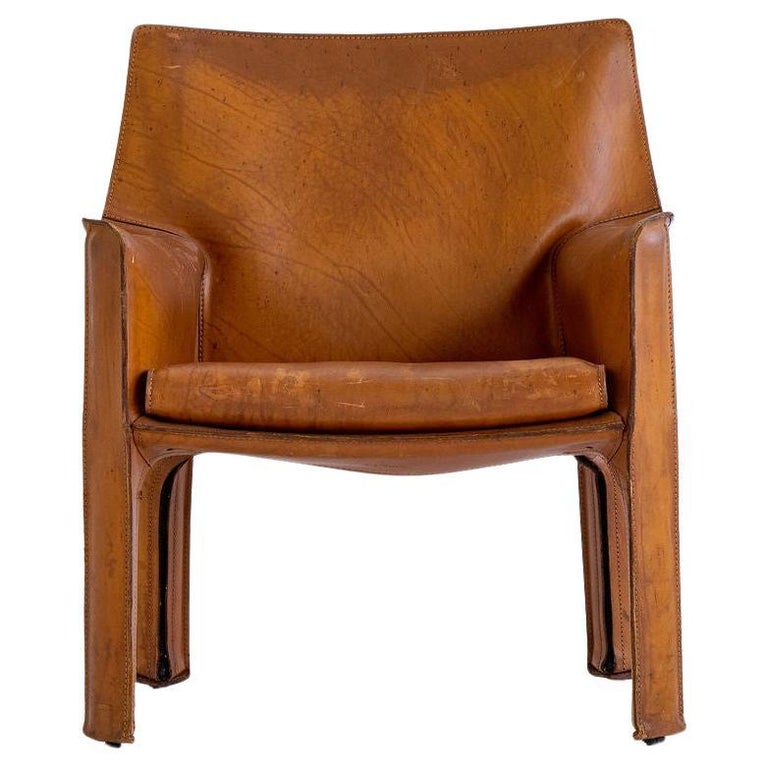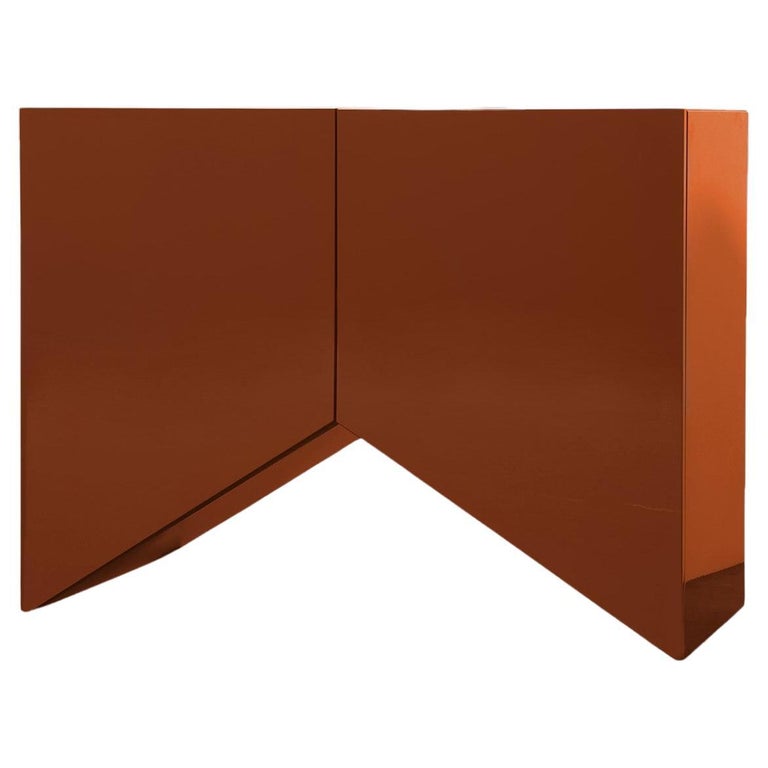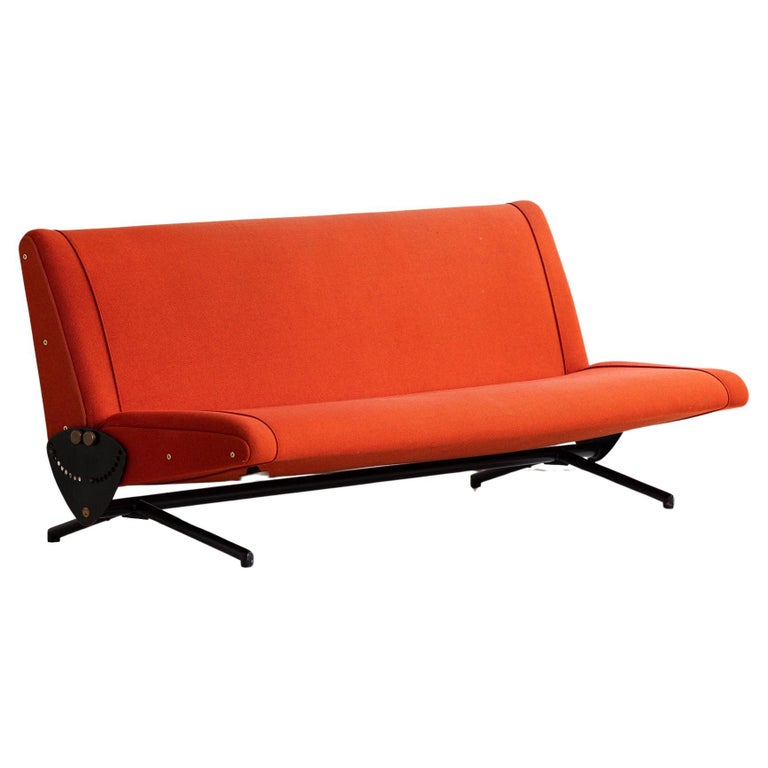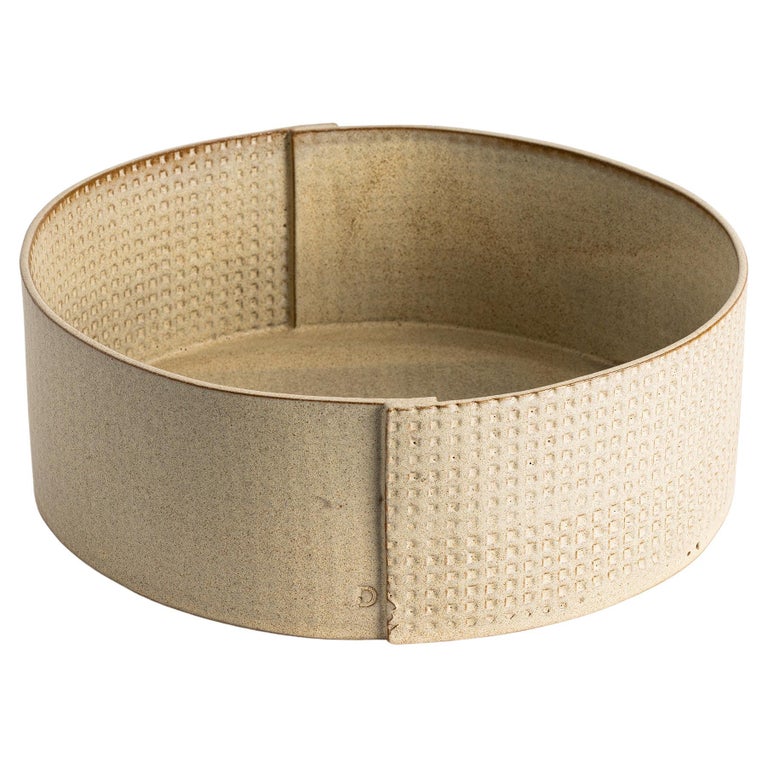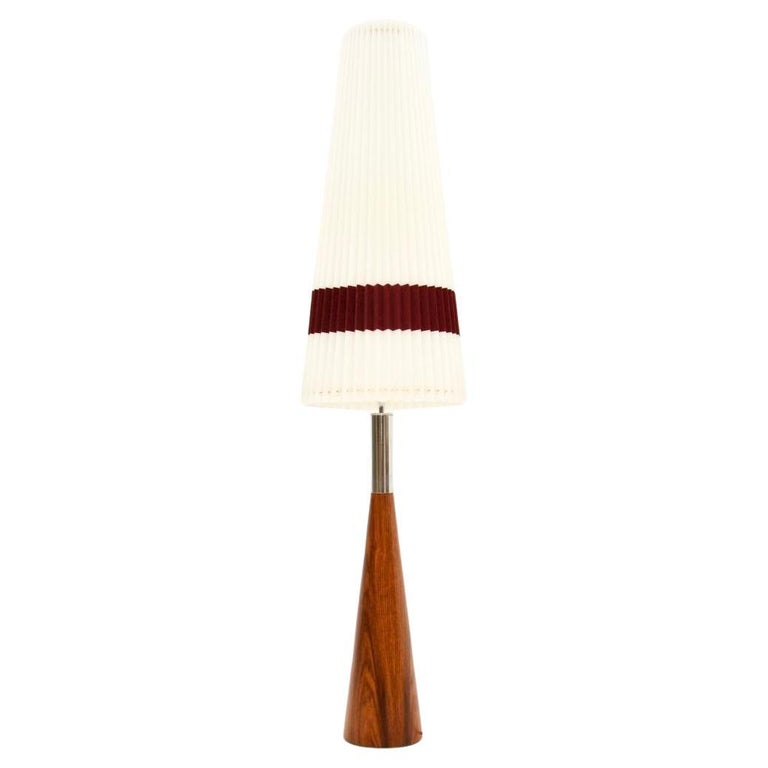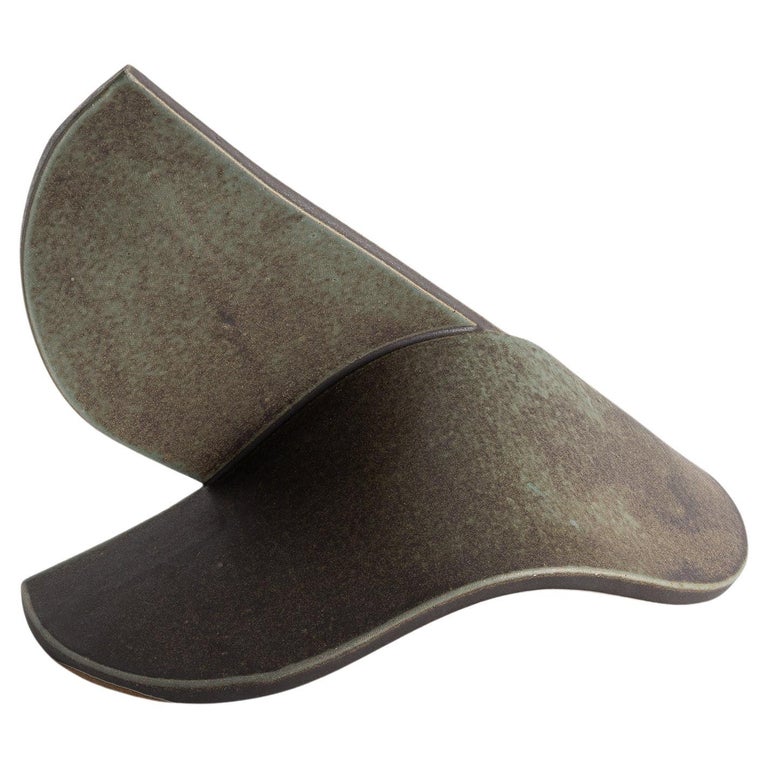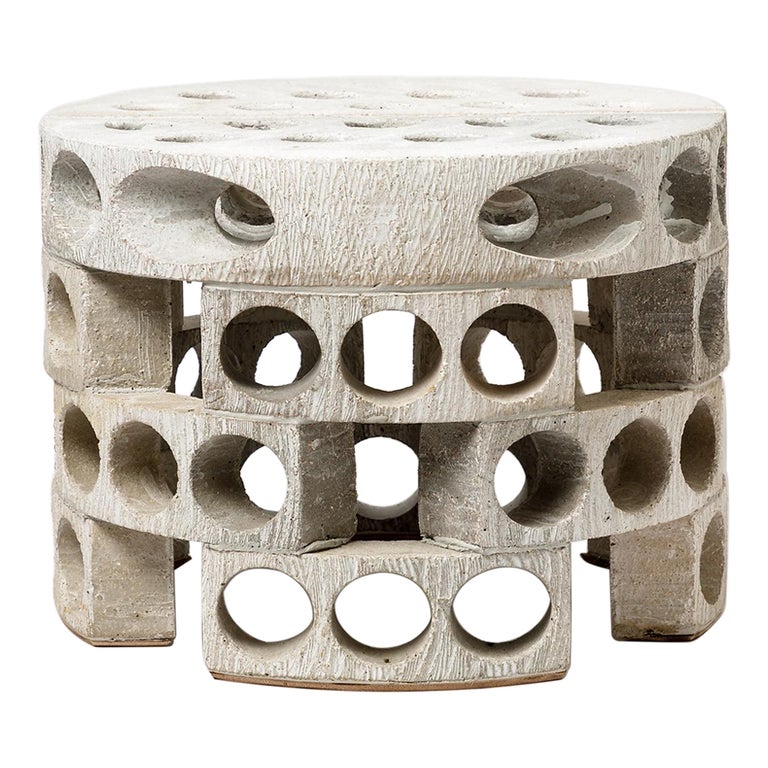November 24, 2024In 2011, when lighting designer Charlie Brokate met his now-husband, Kevin Dumais, he had his worries. “Kevin told me he was an interior designer, and I tensed up,” says Charlie, who remembers thinking at the time, “I hope he’s at least a good one!”
A little late-night Googling relieved him of any concern. “Kevin creates wonderfully tranquil, comfortable interiors,” says Charlie, who three years later not only married Kevin but also took his last name. Doing so, says Charlie, “felt very classic and romantic.”
The same could be said of the mid-20th-century former factory in northwestern Connecticut that houses the headquarters of Dumais Made, the furniture and ceramic-lighting company the pair cofounded in 2017. (Kevin also maintains an interior design office in Manhattan.)

The 5,000-square-foot studio is filled with geometric forms. Here, Charlie’s graphic chipboard templates hang across adjacent walls, creating a Rorschach-esque storyboard inhabited by conical, cylindrical and cubic shapes waiting to be realized in three dimensions as ceramic lamps, sconces and tables. There, Kevin’s collection of vintage furniture and accessories — a French folk sconce, a club-legged rush stool, a slab-like desk — echoes the pair’s distinctive aesthetic vocabulary.
These all come into lovely relief against the cool, bright white of the studio walls. The couple’s individual work spaces reflect their distinctive styles: Kevin designs in a clean, classic white box, its wooden ceiling painted to match, while Charlie’s ceramics studio features the untreated original ceiling, its wood naturally patinated over time.


“White walls and natural light are the through lines,” Kevin says of his decorating approach, and the studio’s spaces. “My design expression is largely through furnishings and accessories. I love a clean envelope.”
A New England native, Kevin has been designing what he refers to as “relatable, livable, achievable” interiors up and down the Eastern Seaboard for almost two decades. After completing studies at the New England School of Art and Design, he did stints at various interior design firms in New York City and then launched his solo firm, Dumais Interiors, in 2008 — just in time for the start of the Great Recession.
“It was a pretty precarious time, but I stuck it out and met Charlie soon after,” he says.
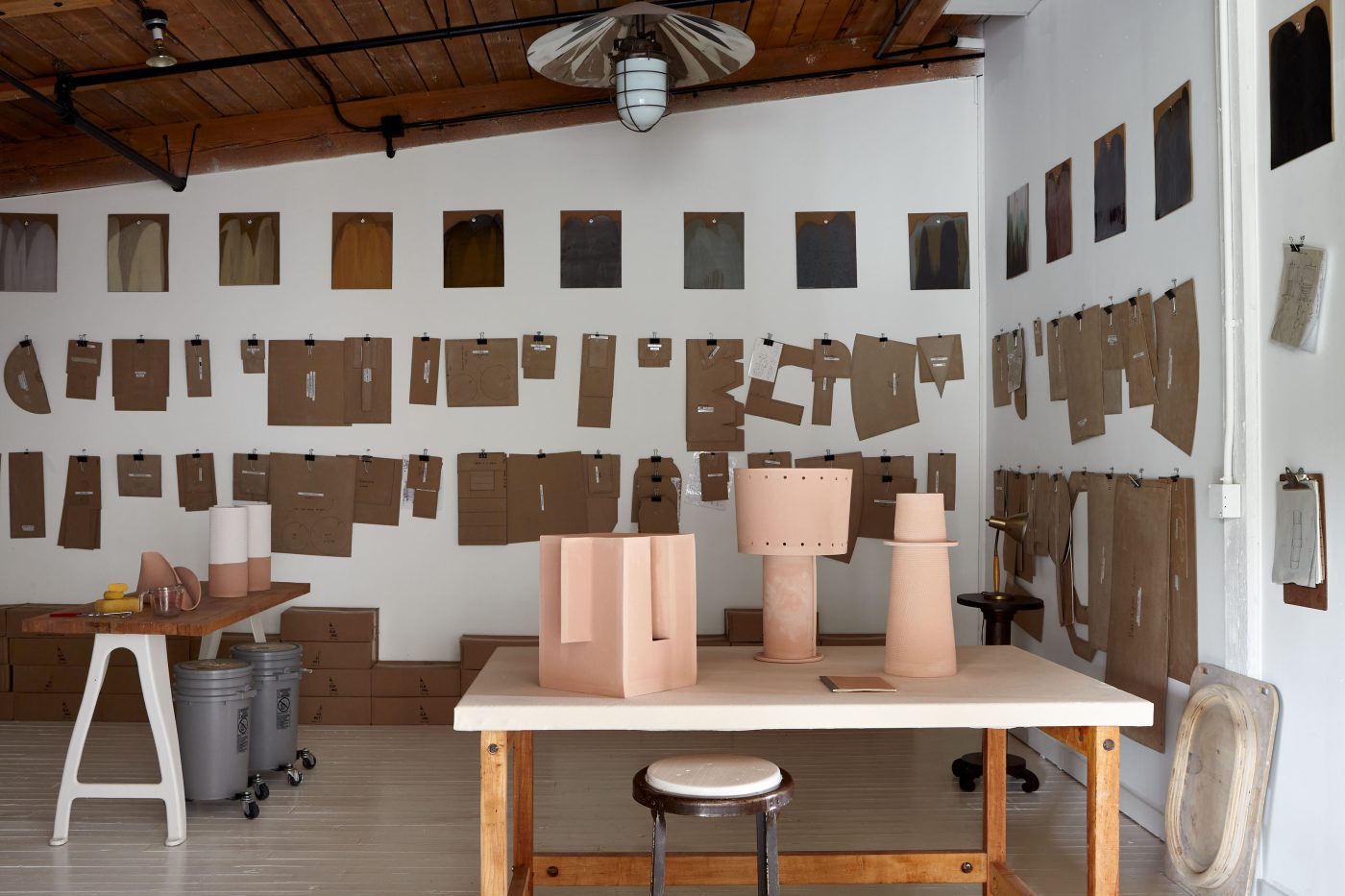
By the time the two met, Charlie had spent almost two decades as an architectural lighting designer. He was always more interested in decorative lighting for projects, but “no one wanted my aesthetic opinion,” he recalls. “They just wanted to know how to dim the lights.”
With Kevin’s encouragement, Charlie began combining his aesthetic interests with his talent for ceramics, which he’d discovered while an undergraduate at Brooklyn’s Pratt Institute.
“Charlie’s work is extremely personal and narrative,” says Kevin. “What’s so distinctive is that the forms are masculine, sometimes brutalist, but there is a softness, an ease, in the way he applies the glazes.”

Thanks to a series of early commissions from Kevin and his clients, Charlie was able to turn ceramics into a full-time profession. That was the genesis of Dumais Made, which now counts among its clients the members’ club Soho House, the design firm Workstead and the clothing and furniture company Jenni Kayne.
Charlie’s sculptural lighting pieces embody the same approachable modern sensibility that characterizes Kevin’s work, as do the ceramic side tables, screens and mirrors the duo has been designing since 2022. Although each line features spare geometric shapes — circles, squares, rectangles — every piece exudes a warm, handmade quality.
The pair’s creations — which they sell on Dumais Made’s 1stDibs storefront along with a selection of antique finds — have proved eminently well suited to the interiors Kevin creates for his discriminating clients.

Case in point: a pied-à-terre in Manhattan’s Upper East Side Carnegie Hill neighborhood, which he decorated for a couple of Massachusetts empty-nesters whose grown children call the city home.
Kevin began, as he always does, by bathing the walls of most of the 2,800-square-foot home in soothing, only slightly off-white neutrals. This played up the shapely furniture and accessories he then deployed, a mix of mid-century furnishings and pieces custom designed for the home, along with bespoke versions of Charlie’s ceramics.

Together, these moves helped engender the Greenwich Village look and feel the clients desired — “The continuous clean palette makes it feel a bit more downtown,” he says —while also taking advantage of the gracious classic-six layout apartment.
In the library, the Poliform desk holds one of Charlie’s playful Totem lamps, whose geometric form echoes that of the faceted Baker Milling Road caned chair pulled up to it.

In the dining room, a pair of Charlie’s slab bowls, the seams of their construction visible, sit on a Dumais Made dining table constructed from another slab, this one of oak.
More distinctive shapes line the room’s Dumais Made oak shelving, including a custom funnel-base version of one of Charlie’s Bantam lamps, gilded in 10-karat white gold and topped with a conical shade.

In the primary suite, which centers on a Dumais Made custom headboard, an iteration of Charlie’s rectilinear Juliet vase sits on another custom Dumais piece: a walnut waterfall-style dressing table. This cleverly straddles a bench whose biscuit tufting reprises the squares embossed on the ceramic piece.
The Dumais duo orchestrated this project so carefully, one might assume that they plan their own lives as assiduously. The truth is just the opposite: They have made most of their big life decisions with a coin toss.

“After we got married, we needed to either find a bigger apartment or buy a weekend house,” says Charlie, recalling a time when they were living in a 400-square-foot apartment in Yorkville, on Manhattan’s Upper East Side. “So we flipped a penny.”
Call it providence or fate or destiny, but the couple’s decision to purchase a classic Cape near Litchfield, Connecticut, has enlarged not only their living space but also the scope of their work together.
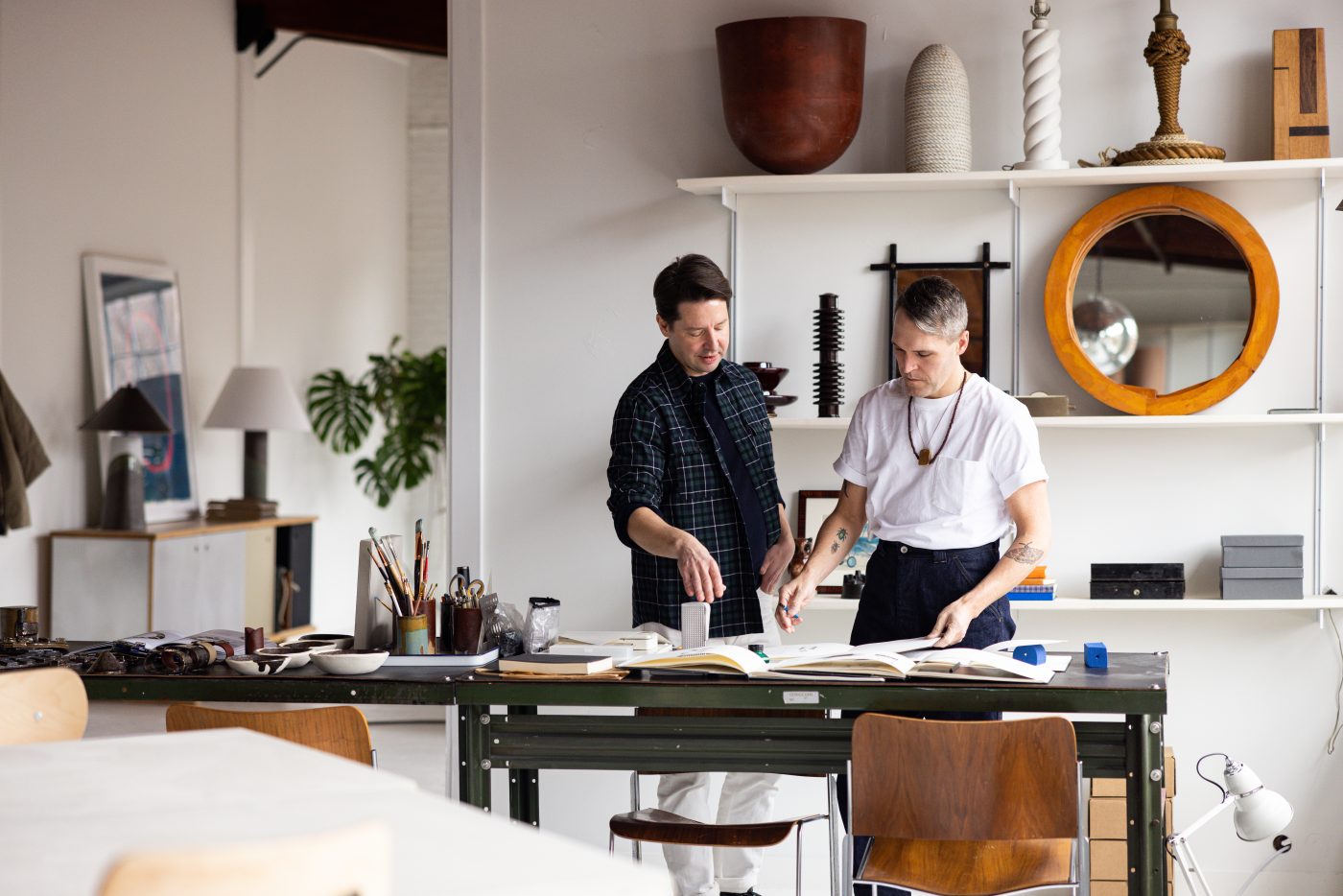
“It’s been really exciting to collaborate with Kevin to select glazes and forms that expand the idea of what ceramics are,” says Charlie. “I can make pottery that looks like pottery, but when Kevin has a client who might prefer, say, metal, we work together to create pieces that look like metal.”
In other words, while some of their choices may be governed by a penny toss, in life and business, they operate more like two sides of the same coin.

